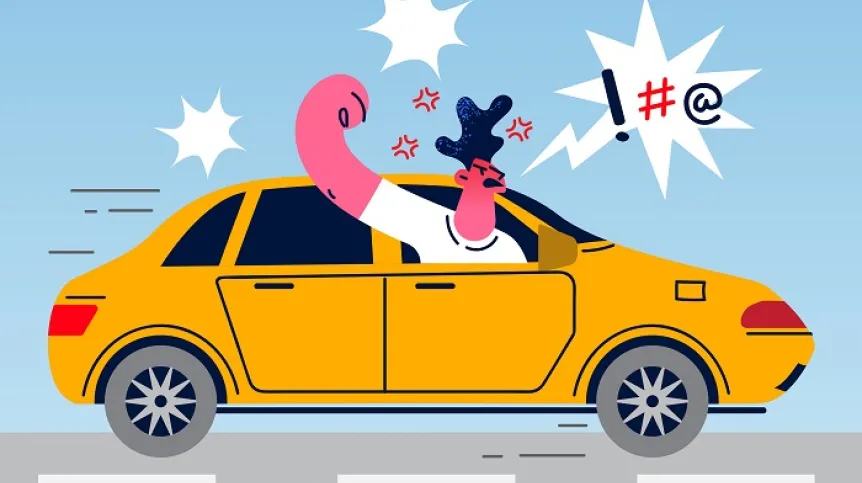
A Polish researcher has explained the best way to ‘fight’ against road rage.
Psychologist Tomasz Witkowski said: 'Researchers distinguish three forms of road rage: anger behind the wheel, verbal aggression, often accompanied by various types of gestures, and finally road rage, when there is direct contact with another road user. There are also behaviours such as flashing lights or driving closely.’
According to Witkowski, aggression on the road is increased by the fact that for our mind - which evolved in the Pleistocene savannah - the car is not a person.
He said: ‘When following a limping person up the stairs, we won't think of rushing them, because the empathy mechanism is activated and this situation does not cause irritation. On the other hand, on the road we only see a car that has no face, we do not know who is sitting inside, whether it is an elderly man who drives slowly so as not to pose a threat, or a new, inexperienced driver. There is simply no communication between the drivers.”
Upbringing is also very important.
Witkowski continued: 'We have been taught patterns of aggression since we were children, the media teach them to us, all we have to do is turn on the TV, we also observe these patterns in parents, superiors, friends. Our aggression simply comes from bad upbringing.
'The opinion that in many Western countries there is less aggression on the roads is a stereotype. It turns out that although English drivers are said to be gentlemen, they are actually very aggressive drivers. There was also a hypothesis that the more cars on the road, the more aggression, but it turned out to be false. For example, in Finland, where the roads are basically empty, aggression also occurs.’
There are, however, differences between men and women.
Witkowski said: ‘Women are much more likely than men to be verbally aggressive towards other drivers. Men, on the other hand, are more likely to engage in active aggression, such as offensive gestures, flashing lights or cutting off other cars.’
He added that the stereotype that owners of large, powerful, fast cars are more likely to be aggressive is true. He said: ‘The explanation is that they try to show their power on the road, often compensating for the lack of opportunity to show it in professional, family or any other relationships.’
According to Witkowski, there are three methods to reduce aggression: a system of communication between drivers, a system of punishments and changing the way of learning to drive.
He said: ‘It used to be that inexperienced drivers had a green leaf symbol on their car. This signal inhibited the aggression of other drivers. The letter L on a driving school car has this purpose. We think about it not with aggression, but as a certain obviousness that appears on the road. CB radio, which enabled contact between drivers, was also a great tool. This form of communication reduced aggression very well. Now cars have smaller, tinted windows and we do not see that someone, for example, is smiling at us apologetically. Therefore, we should try developing a system of communication between drivers. I am a strong supporter of returning to the green leaf.
'A lot depends on the punishment system. Penalties should be imposed quickly and inevitably. If this is the case, drivers are simply more polite. Unfortunately, the penalty system in Poland teaches drivers how not to get caught and therefore is ineffective. There is a lack of consistency and inevitability in its application.’
The way of learning to drive also raises the expert's objections. 'Our drivers are rarely taught defensive driving, which ensures the safety of the driver and other road users. Instead, offensive and aggressive driving is preferred.’ (PAP)
Paweł Stępniewski
ps/ mir/ kap/
tr. RL













